This article was co-authored by Ni-Cheng Liang, MD. Dr. Ni-Cheng Liang is a board certified Pulmonologist and the Director of Pulmonary Integrative Medicine at Coastal Pulmonary Associates affiliated with the Scripps Health Network in San Diego, California. She also serves as a Voluntary Assistant Professor of Medicine at the University of California San Diego School of Medicine while volunteering for the UCSD Medical Student-Run Free Clinic for uninsured patients. With over 15 years of experience, Dr. Liang specializes in pulmonary and respiratory medical concerns, mindfulness teaching, physician wellness, and integrative medicine. Dr. Liang received her Doctor of Medicine (MD) from the University of Maryland School of Medicine. Dr. Liang was voted as a San Diego Top Doctor in 2017 and 2019. She was also awarded the 2019 American Lung Association San Diego Lung Health Provider of the Year.
There are 8 references cited in this article, which can be found at the bottom of the page.
wikiHow marks an article as reader-approved once it receives enough positive feedback. In this case, 91% of readers who voted found the article helpful, earning it our reader-approved status.
This article has been viewed 254,839 times.
Costochondritis, also called chest wall pain, costosternal syndrome, or costosternal chondrodynia, occurs when the cartilage between a rib and the breastbone (sternum) becomes inflamed and swollen. The symptoms can mimic that of a heart attack so always go to the doctor at the first sign of chest pain to rule out a heart attack. The doctor will also be able to advise you on how to best combat the pain while you wait for it to heal.[1]
Steps
Medical Assistance
-
1Go immediately to the doctor or call emergency responders if you experience chest pain. A medical professional will be able to determine whether it is a heart attack or something less serious like costochondritis.
- Know what to expect at the doctor’s office. The doctor will likely palpate (examine with her fingers) along your sternum to determine where it hurts and the extent of the inflammation. If she is able to reproduce the pain while palpating, it is likely costochondritis and not a heart attack. She will also likely ask about events in your life, like recent injuries, which might be the cause.
- Your doctor may ask you to undergo other tests to rule out other conditions frequently associated with chest pain, including osteoarthritis, lung disease, gastrointestinal conditions, or an infection of the joint. She may request x-rays, CT scans, an MRI, or an electrocardiograph.[2]
- Tell your doctor if you have heart, liver, or kidney disease, high blood pressure, ulcers, or have had internal bleeding in the past. This knowledge will help your doctor tailor your pain management plan to what is right for you.[3]
-
2Take prescription antibiotics if recommended by your doctor. If your case of costochondritis is caused by an infection in the joint, then your doctor will likely prescribe antibiotics to be taken either orally or through an IV.[4]
- This is usually not necessary, as infections are rarely the cause of costochondritis.
Advertisement -
3Discuss prescription drug options with your doctor. If your pain does not go away after a few weeks and over-the-counter nonsteroidal anti-inflammatory drugs have not been effective, your doctor may suggest something stronger to help you cope with the pain. Possible prescription medications may include:[5]
- Prescription-strength nonsteroidal anti-inflammatory drugs (NSAIDs) similar to ibuprofen (Advil, Motrin). This is the main treatment for costochondritis. If you take these for a long period of time you must be observed by a doctor because they can harm your stomach and kidneys.
- Medications containing codeine, like Vicodin, Percocet, etc. These medications can be addictive.
- Some antidepressants or anti-seizure medications can also be effective in managing chronic pain.
-
4Consider more invasive procedures to combat the pain. Most cases of costochondritis heal on their own over time. But if the pain remains unbearable, your doctor may suggest:[6]
- Injection of a corticosteroid and a numbing medication directly into the joint that hurts.
- Transcutaneous electrical nerve stimulation (TENS). This technique uses weak electrical signals to interrupt the pain signals and prevent them from registering in your brain.
-
5Discuss surgical options for removing or repairing the damaged cartilage if nothing else works. This is sometimes necessary, particularly if the cartilage has been badly damaged by an infection.[7]
- When combined with antibiotics, the outcome is usually very good.
- After you recover, go for yearly check-ups to make sure that the joint remains healthy.
Managing Pain
-
1Try over-the-counter painkillers. Nonsteroidal anti-inflammatory drugs are most likely to be effective. Ask your doctor if he recommends using nonprescription painkillers. These medications may provide you with some relief.[8] [9]
- If you are taking prescription medicines for this or any other condition, consult with your doctor before starting any over-the-counter medications. Your doctor will be able to advise you of any potential interactions between the over-the-counter medications and your other medications.
- Follow the manufacturer’s instructions and consult your doctor if you will take them for more than a few days. Do not take more than the instructions say.
- Talk to your doctor before using these medications, even over-the-counter medications, if you have heart disease, high blood pressure, kidney disease, liver disease, or are prone to stomach ulcers or internal bleeding.
-
2Rest to give your body time to heal. This may mean that you have to refrain from strenuous sports for several weeks.[10] Costochondritis is usually due to activities that stretch the cartilage and muscles around the chest wall. The number one doctor-prescribed treatment is avoidance or rest from the activity that is causing the discomfort. The pain usually goes away after a few days or weeks, but it could take up to a few months.[11]
- Rest until you no longer feel pain.
- Reintroduce physical activity into your life slowly to give yourself time to build up lost muscle and stamina.
- Be particularly careful of activities that require sudden, sharp moves, high stress on your chest muscles, or put you at risk of receiving blows to the chest. These include tennis, baseball, golf, basketball, and karate.
-
3Apply heat to the area that is sore. This may help increase the blood flow and relax muscles that may be tight.[12] [13]
- Use a hot water bottle or a heating blanket.
- Do not apply the heat source directly to your skin. If you use a hot water bottle, wrap it in a towel to protect you from burning yourself.
- Apply the heat for several minutes and then remove it to give your skin a chance to cool down.
-
4Put an ice pack on the affected joint. The joint is the sore area where your sternum and ribs connect. The ice will help reduce the swelling and soothe the inflammation.[14]
- A bag of frozen peas or corn wrapped in a towel makes a quick, handy ice pack.
- Do not apply the ice pack directly to your skin.
- After 15–20 minutes, remove the ice pack and give your skin a chance to warm up. Repeat this three to four times daily.
-
5Stretch tightened chest muscles around the joint. But be careful to do so slowly, gently, and only with a doctor's approval. The doctor may send you to a specialist to learn what types of exercises would best suit your injury.
- Start easy by stretching your chest muscles with slow deep breaths.
- When you feel ready, add pectoral muscle stretches. An easy way to do this is to brace your forearm against a doorway and then slowly lean forward until you feel the muscles below and around your shoulders stretch.
- Yoga poses combined with deep breathing are an excellent way to both relax and stretch. Try the Sphinx pose. Lie on your stomach while supporting yourself on your elbows. Then open your chest, stretching up and backwards.
- If the exercises hurt, stop immediately to avoid hurting yourself.
-
6Experiment with different positions when you sleep until you find one that minimizes your discomfort. Try to avoid positions that put pressure on the painful joint.
- It will probably be uncomfortable to sleep on your stomach.
-
7Improve your posture to reduce the strain on your chest. Sitting or standing with a hunched posture is likely to aggravate your costochondritis and increase your discomfort.
- Practice sitting, standing, and walking with a book balanced on your head.
- Concentrate on opening your chest and letting your shoulders roll back.
Symptoms and Causes
-
1Recognize the symptoms. Costochondritis can cause extreme discomfort. Sufferers describe the pain as:[15]
-
2Be aware that because the main symptom is chest pain, it can be hard to tell the difference between costochondritis and the onset of a heart attack. The key difference is that during costochondritis the painful area is generally sensitive to the touch and the pain is reproducible when your doctor examines you and palpitates the area.[18] Even so, in all cases of chest pain, it is best to see a doctor immediately to rule out a heart attack.
- A heart attack is usually a dull pain with pressure and is associated with numbness in the arm and jaw.
-
3Know what can cause costochondritis. Costochondritis has various causes. Some frequent ones are:[19]
- An injury which damages the cartilage that joins the rib and breastbone. This may include a blow or straining sustained during carrying heavy items or severe coughing. An upper respiratory infection which causes severe coughing can trigger costochondritis.[20] [21]
- Arthritis in the joint. Osteoarthritis, rheumatoid arthritis, and ankylosing spondylitis can cause chest pain.
- An infection in the joint, such as tuberculosis, syphilis, or aspergillosis. Sometimes costochondritis is caused by a bacterial infection in the joint after surgery.[22]
- A tumor infecting the joint.
- In other cases there may be no clear cause.
Expert Q&A
-
QuestionHow can I get rid of costochondritis pain fast?
 Ni-Cheng Liang, MDDr. Ni-Cheng Liang is a board certified Pulmonologist and the Director of Pulmonary Integrative Medicine at Coastal Pulmonary Associates affiliated with the Scripps Health Network in San Diego, California. She also serves as a Voluntary Assistant Professor of Medicine at the University of California San Diego School of Medicine while volunteering for the UCSD Medical Student-Run Free Clinic for uninsured patients. With over 15 years of experience, Dr. Liang specializes in pulmonary and respiratory medical concerns, mindfulness teaching, physician wellness, and integrative medicine. Dr. Liang received her Doctor of Medicine (MD) from the University of Maryland School of Medicine. Dr. Liang was voted as a San Diego Top Doctor in 2017 and 2019. She was also awarded the 2019 American Lung Association San Diego Lung Health Provider of the Year.
Ni-Cheng Liang, MDDr. Ni-Cheng Liang is a board certified Pulmonologist and the Director of Pulmonary Integrative Medicine at Coastal Pulmonary Associates affiliated with the Scripps Health Network in San Diego, California. She also serves as a Voluntary Assistant Professor of Medicine at the University of California San Diego School of Medicine while volunteering for the UCSD Medical Student-Run Free Clinic for uninsured patients. With over 15 years of experience, Dr. Liang specializes in pulmonary and respiratory medical concerns, mindfulness teaching, physician wellness, and integrative medicine. Dr. Liang received her Doctor of Medicine (MD) from the University of Maryland School of Medicine. Dr. Liang was voted as a San Diego Top Doctor in 2017 and 2019. She was also awarded the 2019 American Lung Association San Diego Lung Health Provider of the Year.
Board Certified Pulmonologist Ask a healthcare professional if Tylenol or ibuprofen are recommended for you. Over-the-counter pain relievers or analgesics might provide some temporary relief.
Ask a healthcare professional if Tylenol or ibuprofen are recommended for you. Over-the-counter pain relievers or analgesics might provide some temporary relief. -
QuestionIs ice or heat better for costochondritis?
 Ni-Cheng Liang, MDDr. Ni-Cheng Liang is a board certified Pulmonologist and the Director of Pulmonary Integrative Medicine at Coastal Pulmonary Associates affiliated with the Scripps Health Network in San Diego, California. She also serves as a Voluntary Assistant Professor of Medicine at the University of California San Diego School of Medicine while volunteering for the UCSD Medical Student-Run Free Clinic for uninsured patients. With over 15 years of experience, Dr. Liang specializes in pulmonary and respiratory medical concerns, mindfulness teaching, physician wellness, and integrative medicine. Dr. Liang received her Doctor of Medicine (MD) from the University of Maryland School of Medicine. Dr. Liang was voted as a San Diego Top Doctor in 2017 and 2019. She was also awarded the 2019 American Lung Association San Diego Lung Health Provider of the Year.
Ni-Cheng Liang, MDDr. Ni-Cheng Liang is a board certified Pulmonologist and the Director of Pulmonary Integrative Medicine at Coastal Pulmonary Associates affiliated with the Scripps Health Network in San Diego, California. She also serves as a Voluntary Assistant Professor of Medicine at the University of California San Diego School of Medicine while volunteering for the UCSD Medical Student-Run Free Clinic for uninsured patients. With over 15 years of experience, Dr. Liang specializes in pulmonary and respiratory medical concerns, mindfulness teaching, physician wellness, and integrative medicine. Dr. Liang received her Doctor of Medicine (MD) from the University of Maryland School of Medicine. Dr. Liang was voted as a San Diego Top Doctor in 2017 and 2019. She was also awarded the 2019 American Lung Association San Diego Lung Health Provider of the Year.
Board Certified Pulmonologist Opt for heat, like a warm compress, heating pad, or hot, wet towel. Feel free to use these when you're sitting, watching TV, or about to go to sleep.
Opt for heat, like a warm compress, heating pad, or hot, wet towel. Feel free to use these when you're sitting, watching TV, or about to go to sleep. -
QuestionCan costochondritis develop four years after cardiac surgery?
 Chris M. Matsko, MDDr. Chris M. Matsko is a retired physician based in Pittsburgh, Pennsylvania. With over 25 years of medical research experience, Dr. Matsko was awarded the Pittsburgh Cornell University Leadership Award for Excellence. He holds a BS in Nutritional Science from Cornell University and an MD from the Temple University School of Medicine in 2007. Dr. Matsko earned a Research Writing Certification from the American Medical Writers Association (AMWA) in 2016 and a Medical Writing & Editing Certification from the University of Chicago in 2017.
Chris M. Matsko, MDDr. Chris M. Matsko is a retired physician based in Pittsburgh, Pennsylvania. With over 25 years of medical research experience, Dr. Matsko was awarded the Pittsburgh Cornell University Leadership Award for Excellence. He holds a BS in Nutritional Science from Cornell University and an MD from the Temple University School of Medicine in 2007. Dr. Matsko earned a Research Writing Certification from the American Medical Writers Association (AMWA) in 2016 and a Medical Writing & Editing Certification from the University of Chicago in 2017.
Family Medicine Physician Yes, during cardiac surgery there is manipulation of the rib cage, so I can foresee perhaps developing costochondritis later on after the surgery.
Yes, during cardiac surgery there is manipulation of the rib cage, so I can foresee perhaps developing costochondritis later on after the surgery.
References
- ↑ http://www.mayoclinic.org/diseases-conditions/costochondritis/basics/definition/con-20024454
- ↑ http://www.mayoclinic.org/diseases-conditions/costochondritis/basics/tests-diagnosis/con-20024454
- ↑ http://www.nlm.nih.gov/medlineplus/ency/article/000164.htm
- ↑ http://www.webmd.com/pain-management/costochondritis?print=true
- ↑ http://www.mayoclinic.org/diseases-conditions/costochondritis/basics/treatment/con-20024454
- ↑ http://www.mayoclinic.org/diseases-conditions/costochondritis/basics/treatment/con-20024454
- ↑ http://www.webmd.com/pain-management/costochondritis?print=true
- ↑ http://www.nlm.nih.gov/medlineplus/ency/article/000164.htm
- ↑ Ni-Cheng Liang, MD. Board Certified Pulmonologist. Expert Interview. 18 June 2021.
- ↑ http://www.mayoclinic.org/diseases-conditions/costochondritis/basics/lifestyle-home-remedies/con-20024454
- ↑ http://www.nlm.nih.gov/medlineplus/ency/article/000164.htm
- ↑ http://www.mayoclinic.org/diseases-conditions/costochondritis/basics/lifestyle-home-remedies/con-20024454
- ↑ Ni-Cheng Liang, MD. Board Certified Pulmonologist. Expert Interview. 18 June 2021.
- ↑ http://www.mayoclinic.org/diseases-conditions/costochondritis/basics/lifestyle-home-remedies/con-20024454
- ↑ http://www.mayoclinic.org/diseases-conditions/costochondritis/basics/symptoms/con-20024454
- ↑ http://www.webmd.com/pain-management/costochondritis?print=true
- ↑ http://www.nlm.nih.gov/medlineplus/ency/article/000164.htm
- ↑ http://www.nlm.nih.gov/medlineplus/ency/article/000164.htm
- ↑ http://www.mayoclinic.org/diseases-conditions/costochondritis/basics/symptoms/con-20024454
- ↑ http://www.webmd.com/pain-management/costochondritis?print=true
- ↑ Ni-Cheng Liang, MD. Board Certified Pulmonologist. Expert Interview. 18 June 2021.
- ↑ http://www.webmd.com/pain-management/costochondritis?print=true
About This Article
To treat costochondritis, it's important that you seek medical attention immediately since the symptoms of costochondritis can be similar to those of a heart attack. Once your doctor determines that you're suffering from costochondritis, they may prescribe you antibiotics and pain medication. There are also things you can do at home to manage the pain, like taking over-the-counter pain relievers. You can also apply heat to the area for several minutes to relax your muscles, and you can ice the area for 15-20 minutes to help reduce swelling and inflammation. For more advice from our Medical co-author, like how to recognize the symptoms of costochondritis, scroll down.
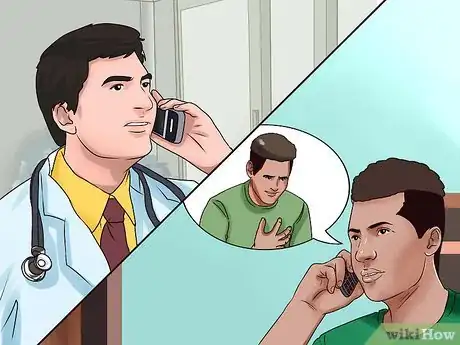

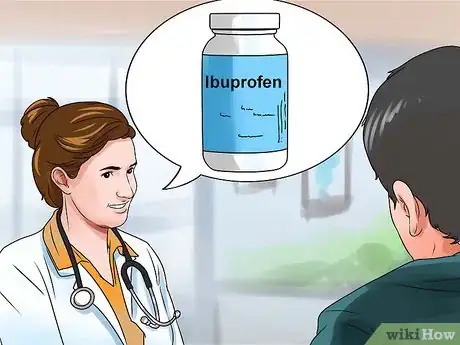
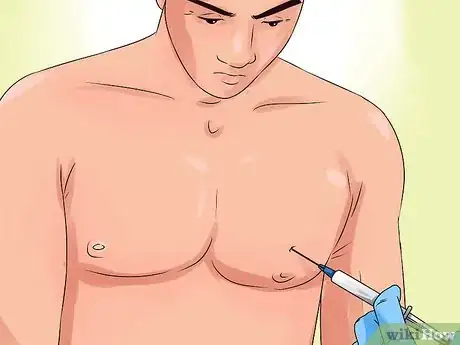
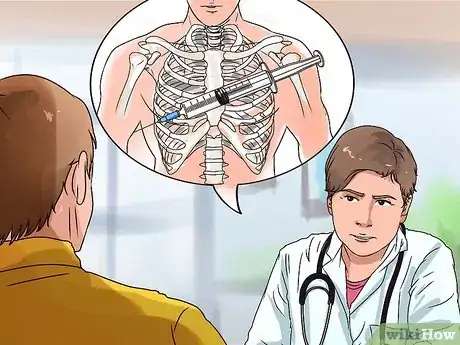
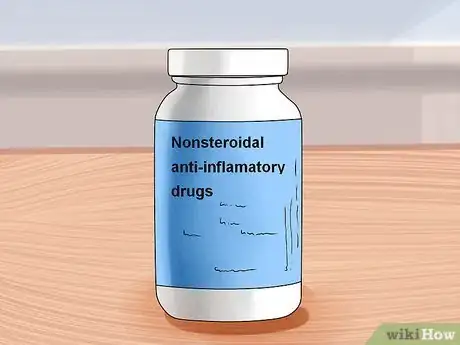

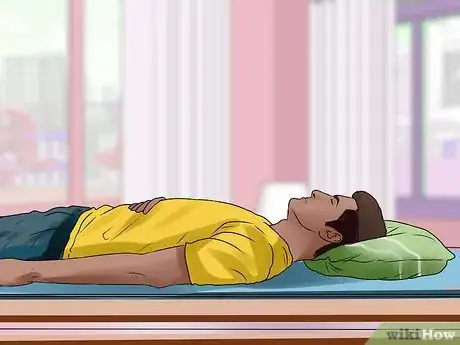
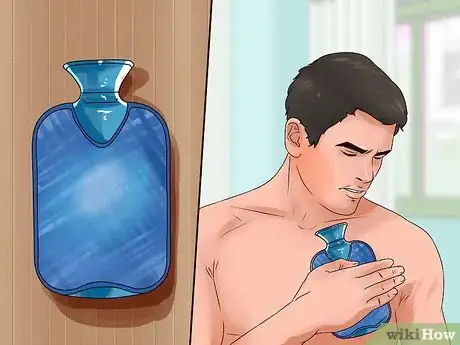
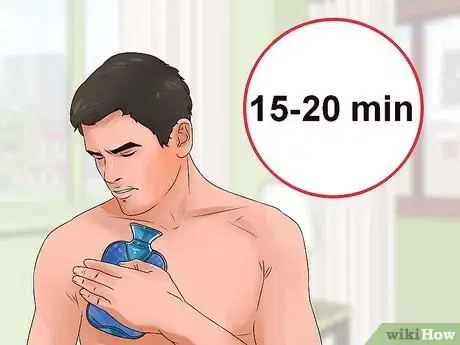

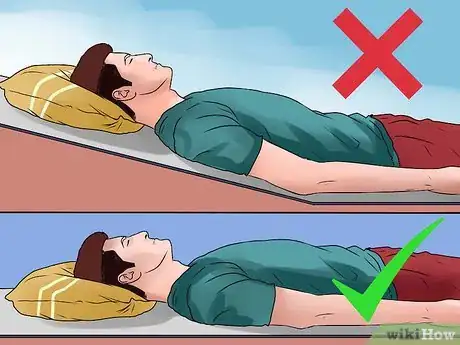
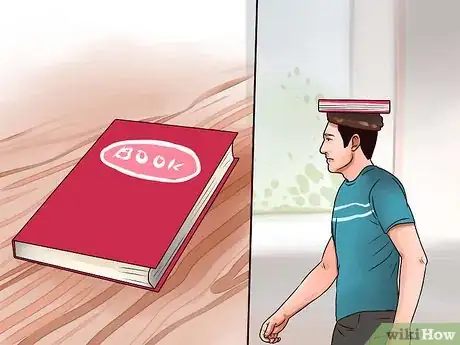
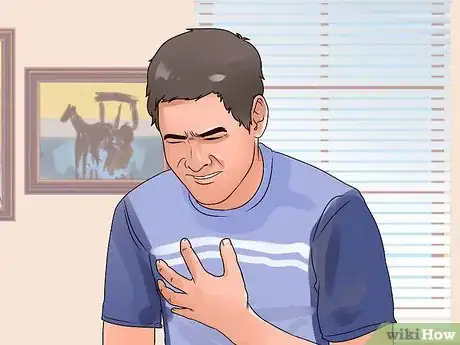
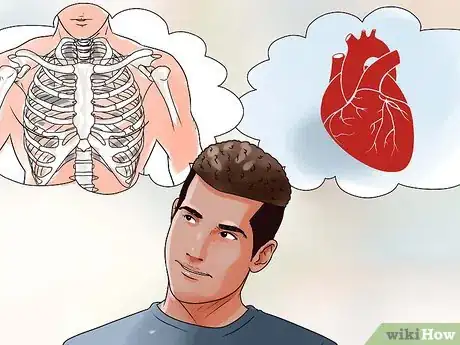
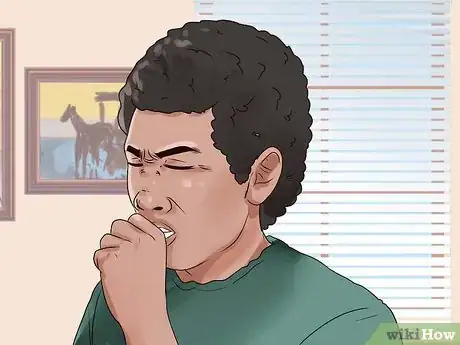
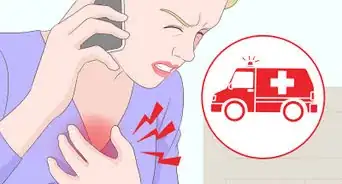
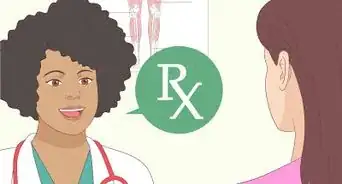
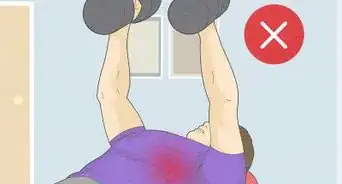
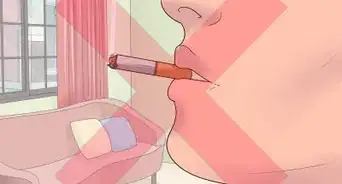
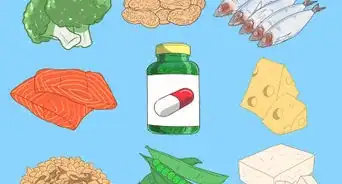
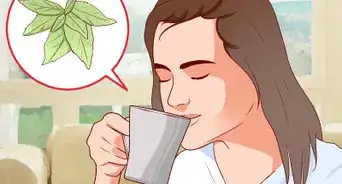
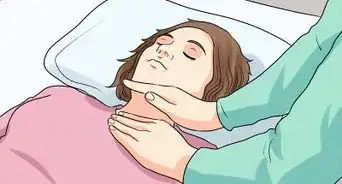
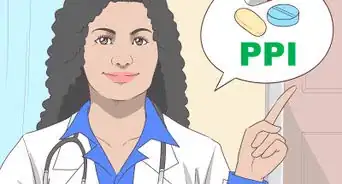
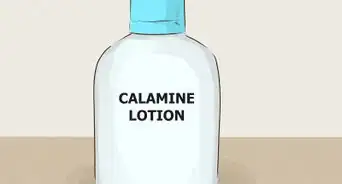

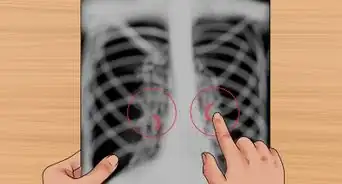
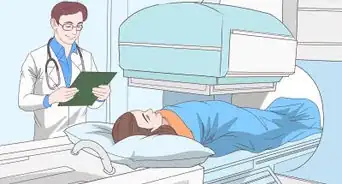










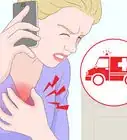
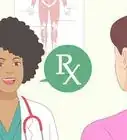

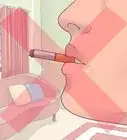




































Medical Disclaimer
The content of this article is not intended to be a substitute for professional medical advice, examination, diagnosis, or treatment. You should always contact your doctor or other qualified healthcare professional before starting, changing, or stopping any kind of health treatment.
Read More...